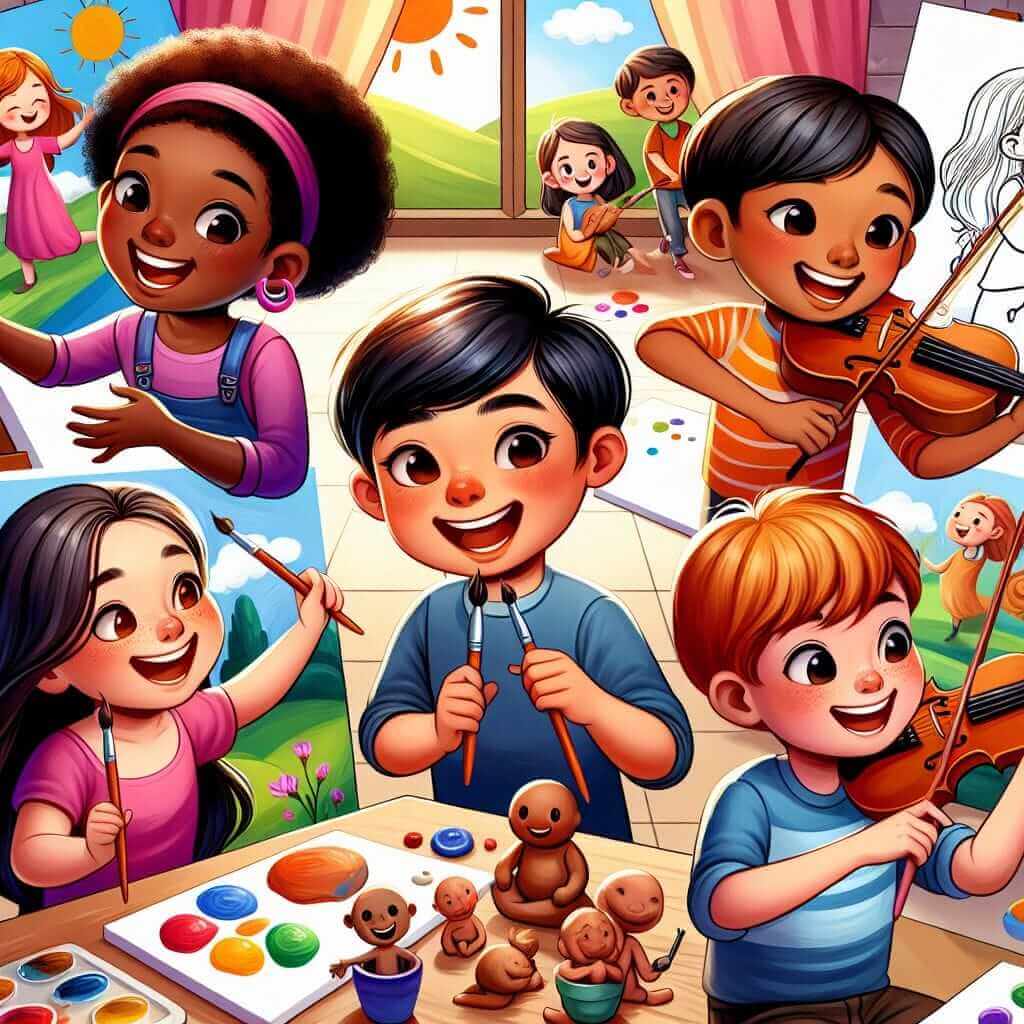The influence of art on society is a topic that frequently appears in the IELTS Writing Task 2 exam. Understanding how to effectively respond to prompts on this theme can significantly enhance your performance. This article will delve into the intricacies of crafting a compelling essay, providing a sample answer, vocabulary insights, and expert tips to secure a Band 8 score.
IELTS Writing Task 2 Sample Questions
Let’s start by exploring some potential essay questions related to the influence of art on society:
- Some people think that art is an essential subject for children at school, while others think it is a waste of time. Discuss both views and give your own opinion.
- Art is often seen as a reflection of society. How does art reflect the society in which it is created?
- Governments should fund art that is beneficial to society. To what extent do you agree or disagree?
Sample Essay Analysis: Art as an Essential Subject in Schools
For the purpose of this guide, we will focus on the first question: “Some people think that art is an essential subject for children at school, while others think it is a waste of time. Discuss both views and give your own opinion.”
Analyzing the Task
This task presents a classic “discuss both views and give your opinion” structure. To successfully answer it, you must:
- Present both sides of the argument fairly and equally.
- Clearly state your own opinion.
- Support your arguments with relevant examples and explanations.
Sample Essay
Art education has long been a subject of debate, with some advocating for its importance in a child’s development while others dismiss it as inconsequential. This essay will delve into both perspectives before presenting my own viewpoint.
Proponents of art education argue that it is crucial for fostering creativity and critical thinking skills. By engaging in artistic activities like painting, drawing, or sculpting, children learn to think outside the box, experiment with different ideas, and express themselves in unique ways. Moreover, art encourages observation and analysis, teaching students to interpret visual information and develop a deeper understanding of the world around them.
Conversely, opponents of compulsory art education often view it as a distraction from more “practical” subjects such as science, technology, engineering, and mathematics (STEM). They argue that time spent on art could be better utilized to equip students with the technical skills necessary for success in today’s competitive job market. Furthermore, critics suggest that not all children are artistically inclined, and forcing them to participate in art classes might be counterproductive and demotivating.
While both sides present valid arguments, I firmly believe that art is an indispensable part of a well-rounded education. Art not only nurtures creativity but also enhances cognitive development, improves problem-solving abilities, and cultivates cultural awareness. Although STEM subjects are undeniably important, a society solely focused on technical expertise risks neglecting the human element that art so beautifully embodies.

Word Count: 260 words.
Key Writing Tips
- Structure: Maintain a clear and logical structure throughout your essay. Introduce the topic, present both sides of the argument, state your opinion, and provide a concise conclusion.
- Vocabulary: Use a range of vocabulary related to education and the arts.
- Grammar: Pay close attention to grammar and sentence structure. Ensure subject-verb agreement, correct tense usage, and avoid fragmented sentences.
- Examples: Provide specific examples to illustrate your points. This could include famous artists, artistic movements, or personal anecdotes.
Vocabulary Builder
- Fostering (verb): /ˈfɒstərɪŋ/ – to encourage the development or growth of something.
- Critical thinking (noun): /ˈkrɪtɪkəl ˈθɪŋkɪŋ/ – the objective analysis and evaluation of an issue in order to form a judgment.
- Inconsequential (adjective): /ˌɪnkɒnsɪˈkwenʃəl/ – not important or significant.
- Proponents (noun): /prəˈpəʊnənts/ – people who speak publicly in support of a particular idea or plan of action.
- Conversely (adverb): /ˈkɒnvɜːsli/ – introducing a statement or idea that reverses one that has just been made or referred to.
- Compulsory (adjective): /kəmˈpʌlsəri/ – required by law or a rule; obligatory.
- Indispensable (adjective): /ˌɪndɪˈspensəbl/ – absolutely necessary.
- Embodies (verb): /ɪmˈbɒdiz/ – be an expression of or give a tangible or visible form to (an idea, quality, or feeling).
Conclusion
Mastering the art of writing a compelling essay on the influence of art on society is an achievable goal with practice and the right approach. By following the tips outlined in this guide, familiarizing yourself with relevant vocabulary, and consistently analyzing your writing, you’ll be well on your way to achieving a Band 8 score in IELTS Writing Task 2. Remember to explore other potential essay prompts related to this topic to broaden your understanding and refine your writing skills.